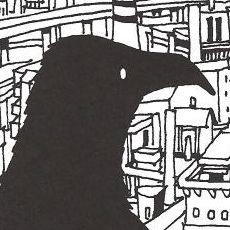Tag: mamoru oshii
-
Don't give up: dying in pursuit of change and The Sky Crawlers
Read More →: Don't give up: dying in pursuit of change and The Sky CrawlersMamoru Oshii doesn’t make forgettable anime. Be it Ghost in the Shell or Patlabor 2, the man injects so much personality into his films that it’s impossible not to recognise his touch. There is, of course, his famous basset hound, but there’s also a poetic side that transports this viewer into the ether. I can’t…
-
Giving Ghost in the Shell 2: Innocence a second chance
Read More →: Giving Ghost in the Shell 2: Innocence a second chanceWhen I first saw Ghost in the Shell 2: Innocence I left the screening unimpressed. At the time, it felt like a confusing trip through a philosophical morass. I disliked the Major’s lack of screen time as I loved her central role in the associated TV series. Still, when I heard that Bandai planned to…
-
Why didn’t you shoot? I meant to. – Jin-Roh: The Wolf Brigade
Read More →: Why didn’t you shoot? I meant to. – Jin-Roh: The Wolf BrigadeThe thing is like a wolf. The thing is a wolf. Thus, it is a thing to be banished. I’ve been an anime fan for a long time. At 22, the portion of my life in which I’ve been a fan is already half of that; and the period of time in which I’d been…
-
Embracing the end of the world
/
/ ReviewsRead More →: Embracing the end of the worldI’ve seen Ghost in the Shell many times; the most recent happened to be Friday night. It is a beautiful film, both beautifully animated and beautifully directed, only 80 minutes long too, and just as importantly, every time I watch it, I feel like I’m interpreting it in a slightly different way. I first stumbled…
